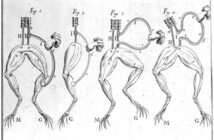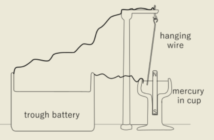
Image courtesy of Wikipedia.org
Joseph Henry was an American scientist who is responsible for creating the first electromagnetic motor.
Henry’s beginning was very modest. He was born to a Scottish family who migrated to America and struggled financially. He apprenticed with a watchmaker in his youth, and this gave him an informal education in mechanics and instrument construction. The experience proved to be beneficial in his career later on.
At 16, he came across a book that discussed experimental philosophy. This sparked his interest in science. He began tutoring while attending the academy and was noted for his skills in explaining and demonstrating scientific concepts. In 1826, he became a professor in mathematics and natural philosophy. He used his time outside class to work on his scientific projects.
He began working on terrestrial magnetism but eventually, he ventured out to work on other types as well. When he attended a lecture by William Sturgeon, an English scientist, he learned how a new type of magnet can only become magnetic when an electric current flows through it. These are electromagnets.
He improved the design of the magnets by insulating the wire and coiling it tightly around the electromagnet’s iron core. Since his design used more wire, he was able to boost the magnetic field strength of his magnets. This made him quite known for his powerful electromagnets – something that he demonstrated to huge crowds. Later on, the Henry magnets were able to suspend in excess of 3,500 pounds.
Through his studies and experiments, Henry built a contraption in the early 1830s that became one of the precursors of modern direct current motors. While it did not do any work, his motor had all the basic components, like the magnetic field, commutator and the electromagnetic armature.
While he was experimenting with electromagnetism, Henry also discovered the property of inductance in electrical circuits. He then became known for the discovery of self inductance. His discovery inspired Michael Faraday, who in turn was recognized for mutual inductance, as well as the Faraday Motor. While Henry also discovered mutual inductance independently of Faraday, it was the latter who published the discovery. To honor the fact that it was Henry who discovered the theory first, the SI unit of inductance is called by his name. One henry is equivalent to the inductance of a circuit that is induced with one volt and a current that changes one ampere per second.
Henry’s works also include the early telegraph, study of sunspots, acoustic investigations and ballistic experiments. It was not in his nature to commercialize his work, so most of his scientific works and discoveries are not credited to him. Nevertheless, one cannot dispute the magnitude of his contributions.



